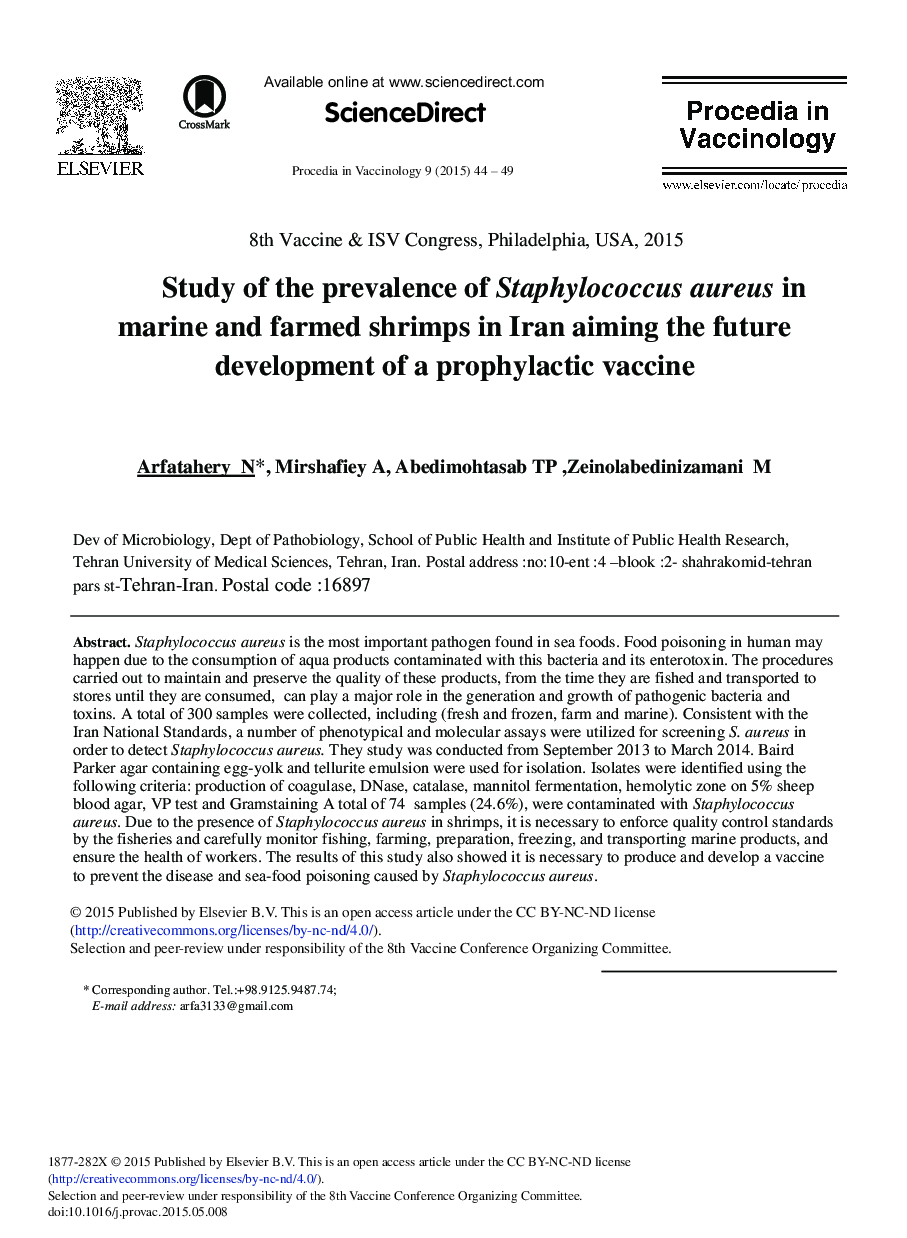| Article ID | Journal | Published Year | Pages | File Type |
|---|---|---|---|---|
| 2473697 | Procedia in Vaccinology | 2015 | 6 Pages |
Staphylococcus aureus is the most important pathogen found in sea foods. Food poisoning in human may happen due to the consumption of aqua products contaminated with this bacteria and its enterotoxin. The procedures carried out to maintain and preserve the quality of these products, from the time they are fished and transported to stores until they are consumed, can play a major role in the generation and growth of pathogenic bacteria and toxins. A total of 300 samples were collected, including (fresh and frozen, farm and marine). Consistent with the Iran National Standards, a number of phenotypical and molecular assays were utilized for screening S. aureus in order to detect Staphylococcus aureus. They study was conducted from September 2013 to March 2014. Baird Parker agar containing egg-yolk and tellurite emulsion were used for isolation. Isolates were identified using the following criteria: production of coagulase, DNase, catalase, mannitol fermentation, hemolytic zone on 5% sheep blood agar, VP test and Gramstaining A total of 74 samples (24.6%), were contaminated with Staphylococcus aureus. Due to the presence of Staphylococcus aureus in shrimps, it is necessary to enforce quality control standards by the fisheries and carefully monitor fishing, farming, preparation, freezing, and transporting marine products, and ensure the health of workers. The results of this study also showed it is necessary to produce and develop a vaccine to prevent the disease and sea-food poisoning caused by Staphylococcus aureus.
